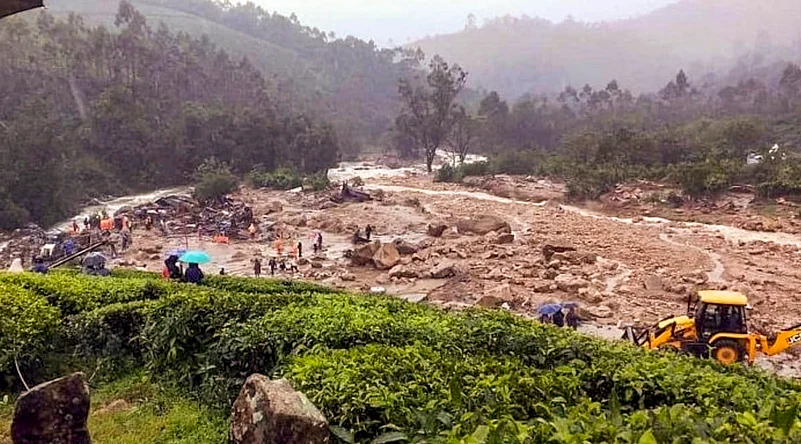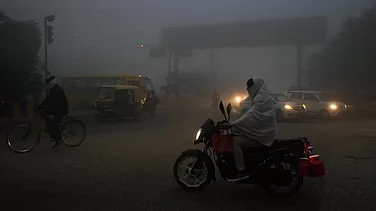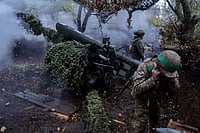Several dozens of people have lost their lives so far in the massive landslides that hit the hilly areas in Kerala's Wayanad district this morning.
The landslides have left a trail of destruction behind, with several houses and infrastructure damaged, rivers swollen and trees uprooted.
Rescuers have been working tirelessly since morning to evacuate those stranded and help those in need, with the Indian Army also joining hands in this effort. Other than the National Disaster Response Force (NDRF), the state government has also deployed disaster response teams from the police and the fire force to affected areas.
WHAT CAUSED THE LANDSLIDES?
Officials have said that incessant rains in the region have triggered landslides, adding that the southern state has recorded 372 mm rainfall in the last 24 hours.
Union Minister of State George Kurian also said that a cloudburst took place in Kerala at around 1 am. "Early in the morning, PM Modi directed all forces and NDRF team to reach there and announced the compensation also. The rescue work is going on," Kurian said.
The India Meteorological Department (IMD) on Tuesday also issued a red alert for Wayanad and neighbouring Malappuram, Kozhikode and Kannur districts, indicating that they might be hit by extremely heavy rainfall.
The weather office also issued an orange alert for all the other districts of the state except Thiruvananthapuram and Kollam.
A red alert indicates heavy to extremely heavy rain of over 20 cm in 24 hours, while an orange alert means very heavy rain of 11 cm to 20 cm, and a yellow alert means heavy rainfall between 6 cm and 11 cm.
Additionally, a senior climate scientist said that the warming of the Arabian Sea is allowing the formation of deep cloud systems, leading to extremely heavy rainfall in Kerala in a short period of time and thus increasing the possibility of landslides, news agency PTI reported.
"Our research found that the southeast Arabian Sea is becoming warmer, causing the atmosphere above this region, including Kerala, to become thermodynamically unstable," Abhilash said.
"This atmospheric instability, allowing the formation of deep clouds, is linked to climate change. Earlier, this kind of rainfall was more common in the northern Konkan belt, north of Mangalore."
With climate change, that rain-bearing belt with deep clouds is extending southward and this is the main reason behind such extremely heavy rainfall, he said.
The director of the Advanced Centre of Atmospheric Radar Research at Cochin University of Science and Technology (CUSAT), S Abhilash, said Kasargod, Kannur, Wayanad, Calicut and Malappuram districts have been receiving incessant rainfall due to the active monsoon offshore trough affecting the entire Konkan region for the last two weeks.
Several NDRF teams, two helicopters and other rescue teams were also on their way to Mundakkai earlier, a region which has been totally cut off by devastating landslides that rocked Wayanad, the state government.
OFFICIALS AT WORK
Prime Minister Narendra Modi also spoke to Kerala Chief Minister Pinarayi Vijayan to take stock of the situation and assured all the help to the state government.
The Prime Minister's office (PMO) announced an ex-gratia of Rs 2 lakh each for the families of those killed and Rs 50,000 each for those injured.
A control room has been step up in the state by the LDF government to provide assistance in the rescue efforts and immediate relief to those affected by the landslides.
State Health Minister Veena George, meanwhile, visited the Health Department Directorate to assess the ongoing preparations.
She recommended authorities to set up temporary hospitals if necessary and emphasize the need to evaluate the mortuary systems at the existing medical facilities, including the utilisation of mobile mortuaries.
George reviews the operations of the control room, which will function 24/7 to assist both health workers and the public.


























